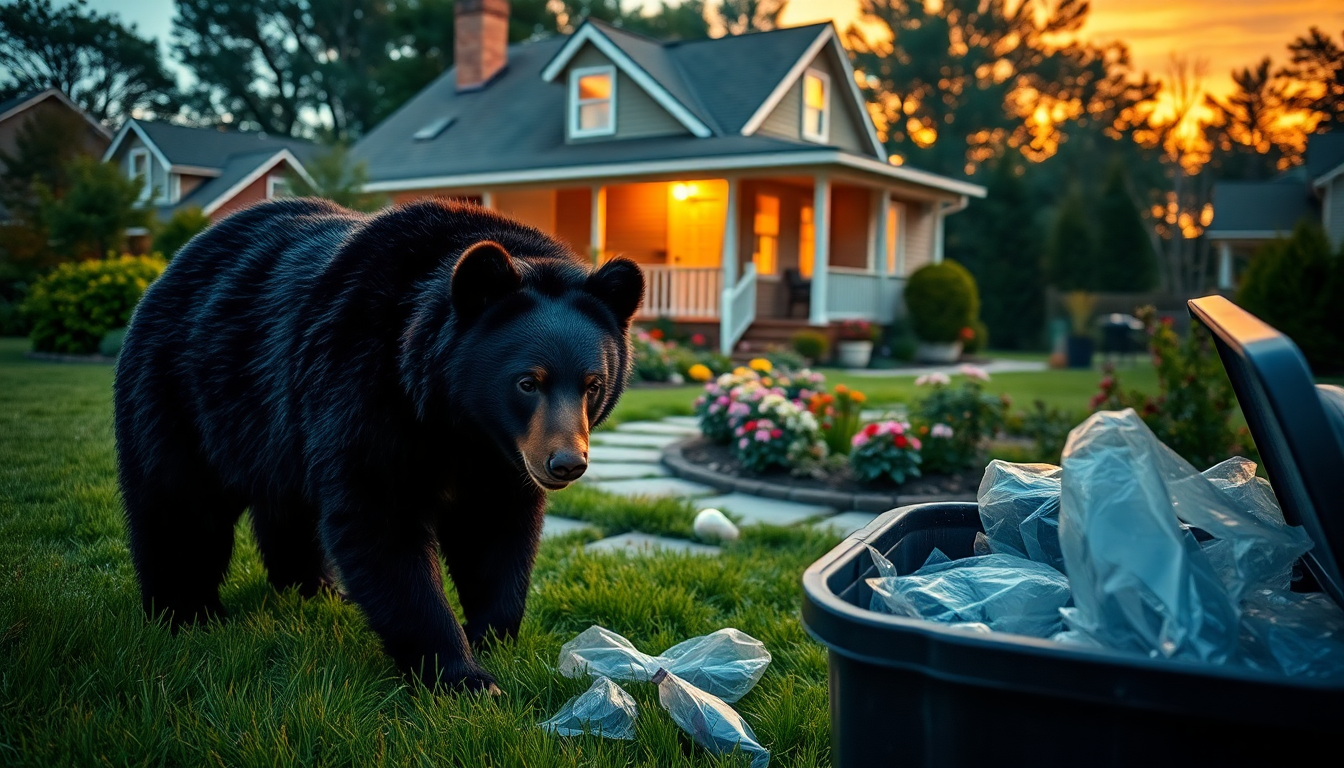In recent weeks, sightings of bears wandering into residential neighborhoods have sparked a lot of chatter among local communities. Take Erin, Ontario, for example—just the other night, a black bear was spotted rummaging through backyards. This kind of event underscores just how important it is to understand bear behavior and know how to react during such encounters.
With wildlife increasingly venturing into populated areas, it’s essential for residents to be informed and ready for anything.
What’s happening with bear sightings?<\/h2>
Picture this: it’s around 9 p.m., and residents in Erin are calling the police after spotting a black bear in their yards. This particular bear, which was described as relatively small, was seen on Pine Ridge Road, knocking over bird feeders in its quest for food. Thankfully, it didn’t cause much damage before wandering off into the nearby woods.
Constable Kirk MacDonald offered a bit of insight into the bear’s behavior, suggesting that it likely sought a more secluded area as night fell. Interestingly, this bear, thought to be about a year old, has been making quite the appearance in the area recently, often caught on residents’ security cameras. Why is this significant? Well, yearling bears—having recently left their mothers—are typically on the lookout for food and a place to call their own.
Such bear sightings aren’t exactly rare in rural spots like Erin, especially during spring and early summer when bears are actively searching for food. Constable MacDonald mentioned that there have been previous encounters, including a sighting in nearby Caledon Village about a month ago. These sightings tend to come in waves over a few years, followed by stretches of quiet.
How to stay safe during a bear encounter<\/h2>
If you ever find yourself face-to-face with a bear, staying calm is key. The Ministry of Natural Resources (MNR) recommends against blocking the bear’s path and advises keeping a safe distance. If you see a bear nearby, it’s smart to alert those around you, making sure kids and pets are brought inside.
And if you happen to be near a building or vehicle, finding shelter is a good move. Should a bear approach, the MNR suggests backing away slowly while keeping your eyes on the bear. Whatever you do, don’t run—that might just trigger a chase response. Instead, try making noise, tossing small objects, and looking larger to discourage the bear.
If things escalate, bear repellent can be useful, but it’s crucial to know how to use it properly. In rare situations where a mother bear poses a threat, playing dead might be an option. However, fighting back is usually the best way to protect yourself. Using anything at hand to deter the bear can greatly improve your chances of staying safe.
Getting ready for future encounters<\/h2>
As urban development continues to creep into wildlife habitats, it’s vital for residents to be proactive in preparing for potential bear encounters. Secure your garbage, take down bird feeders during bear season, and make sure outdoor pet food is stored away to minimize attractants around your home. A little community awareness and education about bear behavior can go a long way in enhancing safety for everyone.
If you live in bear-prone areas, it’s wise to familiarize yourself with local wildlife resources and guidelines. The Bear Wise line offers invaluable advice on managing bear encounters and can help residents learn how to coexist safely with their wild neighbors.
In conclusion, while bear sightings can definitely be unsettling, understanding their behavior, implementing safety measures, and preparing for encounters can help reduce risks significantly. Staying aware and educated is key to ensuring the safety of both residents and wildlife in our shared spaces. So, are you ready to take these steps and feel more secure in your neighborhood?





